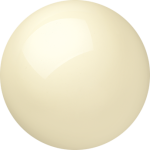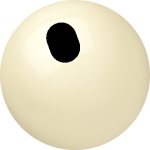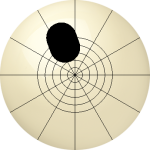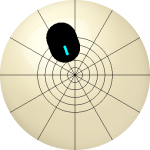I also do not subscribe to lots of numbers that represent things. There are some people I know that love all of the MLB stats but I don't get anything out of it. All I understand are things like the baseball staying inside or going outside of the virtual strike zone box, or the simple yellow 10-yard line drawn on a football field, or the little landing mark of where a tennis ball landed to show in or out of bounds.
The surface of this entire project is to simply show you where you hit the cue ball. It is information we can not easily access ourselves directly. I want to represent this graphically to make it as easy as possible to absorb. Any explanation needed will be too much, it should be extremely obvious. At least that is the goal.
The two major applications are as a personal training aid, and as a live inset in a stream so that commentators can have discussions about tip position if they want to. They can turn on and off the overlay as they talk about it, etc. Possibly they may like to know break speed in MPH, maybe the rare mention about spin-speed ratio, but other than that I don't think they (or viewers) will care much about numbers.
Under the surface, for those who care, and for the real pool practice geeks, there is a lot of high-accuracy numerical informational available. But I am aware that most of the appeal is just in the cue ball graphic with tip location.
---
Now, as for the discussion of using cue ball outcome as an indication of exactly where you did hit the ball, I partially disagree with this argument. Someone can chronically be dropping their elbow slightly before contact on every stroke, and give the cue ball a tiny bit more follow, for their entire pool careers, and never know they are doing it. It may make them try some things they never tried before. There are one or two major revelations that this product can make upon a player that would otherwise be very difficult to realize by ball behavior results alone, possibly enough it make it worth it to them.
Further, cue tip precision is even more important in carom games than pool, and the value in that field may be more well accepted than in pool. Some pool players avoid using spin completely, and I forget that these players even exist. These players wouldn't understand the value of this type of product without some explanation, or by seeing the results of it from their favorite players on their favorite stream. I want to start seeing discussions like "How exactly did SVB hit the cue ball to make that combo drop" or "How much reversal did Sanchez use to keep a short-long-short pattern so compressed", etc... On the other hand, I don't ever want to hear people arguing between "400 and 500 RPM" lol.




